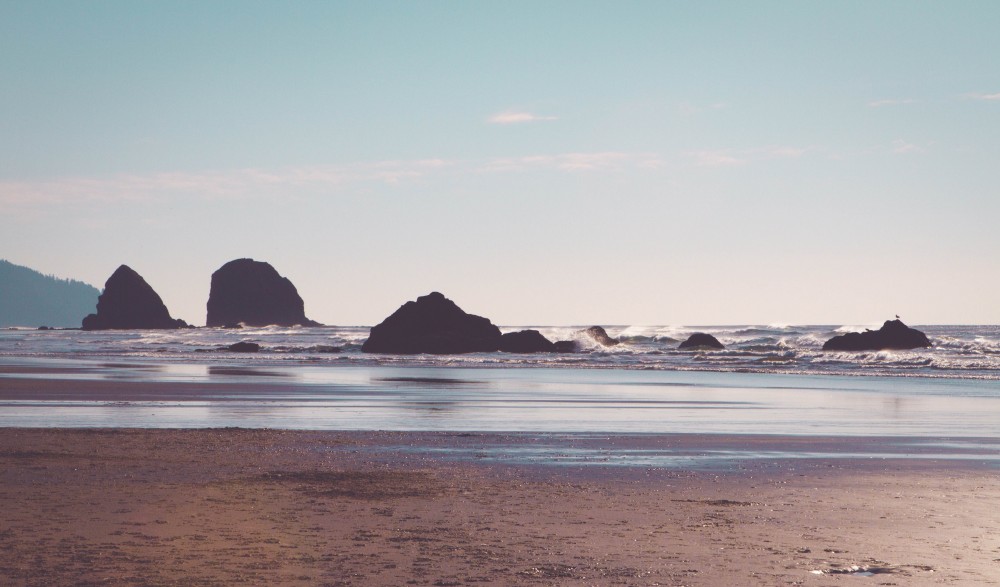In this lab, the focus of the work shifted to spatial and tabular datasets, both raster and vector. The scenario that was presented to me was one in which I had been hired by the GIS department in the City of Vancouver, after certain geologic events that had occurred recently around the world led to the need to create a map highlighting the areas in Vancouver that are at particular risk of a tsunami, should one occur. For the sake of simplicity, this lab considers the immediate danger zone from an anticipated 15-meter wave to be mainly low-lying areas, meaning at or below 15 meters and that lie up to 1 kilometer from the shoreline. For the purpose of this lab’s analyses, this area is considered the “danger zone”.
The learning objectives were as follows:
- Review data for geographic analysis.
- Perform basic geographic analysis to determine areas for a possible tsunami.
- Perform buffer proximity analysis.
- Reclassify raster layers.
- Convert raster to vector data files.
- Combine vector data layers with polygon overlay tool intersect.
- Perform geographic analysis to extract Vancouver data affected by possible tsunami.
- Combine vector data layers with the polygon overlay tool
- Perform a proximity analysis using select by location.
- Extract datasets with the polygon overlay tool
- Calculate statistics (areas, lengths) of Vancouver land use and roads affected by potential tsunami.
- Create summary tables by area of land use.
- Create lists of facilities affected.
- Create summary tables of road infrastructure affected.
- Add a layer of potential signage points.
- Learn how to create a new feature class, explaining the different types (point, multipoint, etc.)
- Introduce basic editing of features and tables (change values on individual table cells, modification/creation/deletion of features)
- Introduce the concept of snapping parameters for more accurate positioning of a new feature.
Specific information that I was required to analyze was: (1) the percentage of the City of Vancouver’s total area that was within the “danger zone” and thus at risk of being hit by a tsunami; and (2) the healthcare and educational facilities that were located within this danger zone.
Percentage of the City of Vancouver’s total area in the Danger Zone
In order to calculate the percentage of the City of Vancouver’s total area within the danger zone, the following formula was used:
(Area of land within danger zone) / (total area of the City of Vancouver) * 100%
Thus, these two values were needed. To obtain these values, a series of functions were preformed in ArcMap.
- First, I exported a new layer, “Vancouver_landuseDanger” by intersecting “Vancouver_landuse” and “Vancouver_Danger”. This new vector layer created with the intersect tool incorporates both conditions for areas susceptible to a tsunami: the areas within a 1km buffer, and the areas below 15 meters of elecvation.
- I then opened the attribute table of “Vancouver_landuseDanger” and used the Summarize function on the categories of landuse in order to generate an output summary table showing the total area for each landuse zone that are in the Danger Zone.
This is the output summary table:
| Category | Sum of area (m2) |
| Commercial | 180116.661665 |
| Government and Institutional | 188548.87032 |
| Open Area | 1090308.182289 |
| Parks and Recreational | 4627741.339941 |
| Residential | 3639795.736536 |
| Resource and Industrial | 5851705.112399 |
| Waterbody | 298316.863803 |
| Total | 15876532.766953 |
- To find the total area of Vancouver, I opened the attribute table of the “Vancouver_landuse” layer and used the Statistics funtion. This gave me a sum of all areas of all landuse types in Vamcouver, which is equal to 131020600.022758 m2.
- With the values for the formula now obtained, I applied them:
Percentage of Vancouver area in the Danger Zone =
15876532.766953 / 131020600.022758 x 100% = 12.12%
Healthcare and educational facilities within the Danger Zone
To identify the healthcare and educational facilities within the danger zone, I created two separate layers with the Overlay and Intersect tools: one for education centers within the danger zone, and one for health care centers within the danger area. By viewing these two layers as well the Vancouver Danger layer, I was able to view only the health and education centers within the danger zone. I then examined the attribute tables to find the specific facilities in the danger zone.
Educational facilities in the danger zone:
- St. Anthony of Padua
- Ecole Rose des Vents
- Heritage 3R’s School
- Vancouver Montessori School
- False Creek Elementary, Emily Car
- Henry Hudson Elementary
- Institute of Indigenous Government.
Health care facilities in the danger zone:
- False Creek Residence
- Broadway Pentecostal Lodge
- Yaletown House Society
- Villa Cathay Care Home.
The product of this lab was a map of Vancouver with the danger zone delineated, showcasing the road network and land use types affected. It can be viewed here.
